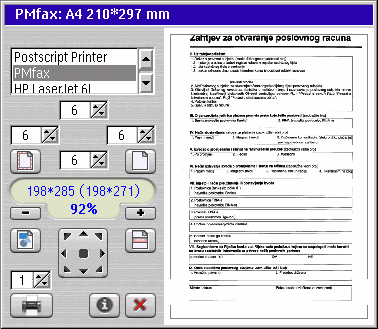
- LINUX NETWORK SCANNER SANE INSTALL
- LINUX NETWORK SCANNER SANE SOFTWARE
- LINUX NETWORK SCANNER SANE FREE
Why not Ubuntu “Hoary”? It’s not officially out yet at time of writing. Now, before you KDE fans start typing nasty comments, read on and discover that KDE comes into the picture just fine later in this article.Ĥ. So when I found out that Ubuntu is using the latest version of Gnome as the DM of choice, the tinkerer in me just can’t stand the temptation to revisit Gnome. When I tried Gnome many years ago, I remembered it as a non-attractive alternative for KDE. Since my SuSe days, I’ve been using KDE as the Desktop Manager.
LINUX NETWORK SCANNER SANE INSTALL
NOTE: I read several reviews that mention debian in a bad light regarding ease of use, to that end, I suggest using Synaptic (type in: apt-get install synaptic), the front end to apt-get.ģ. I have been “dependency-burned” a few times using rpm-based package manager in my Redhat, SuSE, Mandrake days, but on the other hand I also have good friends who swear by it, so again, no distro-war here. My recent experiences with debian-based distros like Knoppix have made me fall in love with the apt-get package management system in terms of reliability (90% of the time it does what it says it will do) and robustness (recovers from errors without messing up the whole system). So having a robust and reliable package manager is a paramount matter.
LINUX NETWORK SCANNER SANE FREE
Let me explain: For those who are new to Linux, one of the joy of using Linux is the freedom to choose from the ungodly amount of free applications out there. Knowing that Ubuntu is also debian-based, is enough to give me another reason to try it. Many have said that Ubuntu provides a pretty seamless desktop experience. Ubuntu being pretty recent, has a huge selection of mature applications. Having said that, I chose Ubuntu “Warty” as the distro for the following reasons:ġ. Having cut my teeth on Slackware, Caldera, Redhat, SuSE, Mandrake, (and in more recent years, Gentoo and Knoppix) I have gone through pretty much all flavors of major distributions, therefore in this article, far be it for me to inflame the “oh-so-combustible” distro-war.
LINUX NETWORK SCANNER SANE SOFTWARE
NOTE: This article is written based on the experience of using Linux on a laptop in a full-time (8 hrs a day) job as a Senior Developer/Build Manager of a software development shop. In summary, it’s light-years on the positive side compared to just a few years ago. The goal of this article is to learn together from the ups and downs that I’ve gone through in installing and using Linux on the new laptop. I recently had the opportunity to setup a new Linux-running laptop after the demise of my trusty Sony Vaio.

And as you will see in this article, installing Linux on a laptop is not as hairy as you may think. As laptops keep dropping in price and increasing in terms of computing power, they really make a nice platform even for cpu intensive applications such as sofware development, desktop publishing, web design, etc. Today, there is no shortage of reviews on Linux on the Desktop, but I think we can benefit from more “Laptopized-Linux” experiences.


 0 kommentar(er)
0 kommentar(er)
